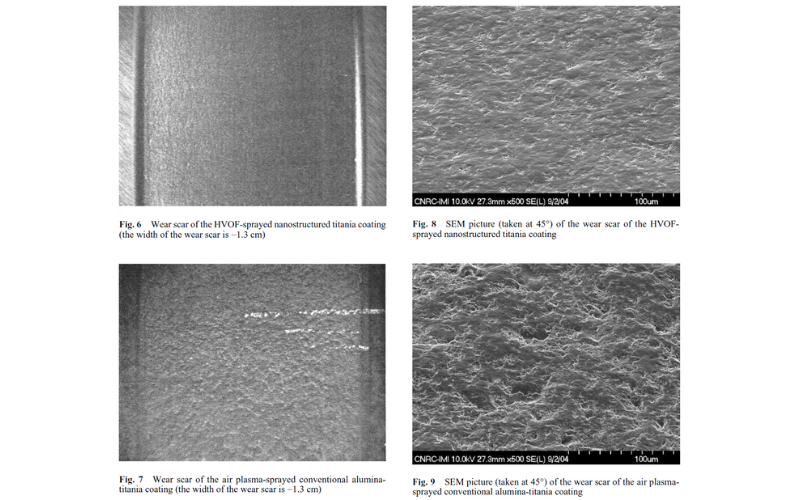与空气等离子喷涂传统 Al2O3-13TiO2 相比,高速氧气燃料喷涂纳米结构二氧化钛的性能更优越
空气等离子喷涂传统氧化铝-钛(Al2O3-13wt.%TiO2)涂层多年来一直用于热喷涂行业的抗磨损应用,主要应用于造纸、印刷和纺织行业。本研究提出了一种替代传统空气等离子喷涂传统铝二氧化钛的方法,即采用高速纯氧燃料(HVOF)喷涂纳米结构二氧化钛(TiO2)。分析并比较了这两种涂层的微观结构、孔隙率、硬度(HV 300 g)、抗裂纹扩展能力、磨损行为(ASTM G65)和磨损疤痕特征。与空气等离子喷涂的传统氧化铝-二氧化钛涂层相比,HVOF 喷涂的纳米结构二氧化钛涂层几乎没有孔隙,并表现出更高的耐磨性。纳米结构涂层中的纳米区起到了阻裂作用,增强了涂层的韧性。通过比较两种涂层的磨损疤痕(通过扫描电子显微镜、体视显微镜和粗糙度测量),可以观察到 HVOF 喷涂的纳米结构二氧化钛涂层的磨损疤痕非常光滑,表明其具有塑性变形特征,而空气等离子喷涂的氧化铝-二氧化钛涂层的磨损疤痕则非常粗糙和断裂。这表明纳米结构涂层具有更好的可加工性。
关键词:耐磨性、空气等离子喷涂、传统氧化铝-二氧化钛、高速纯氧燃烧、纳米结构二氧化钛
最初发表于《热喷涂技术期刊》(2005 年 9 月,第 14 卷,第 397-404 页,2005 年)
作者:R. S. Lima、B. R. Marple
